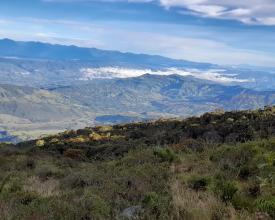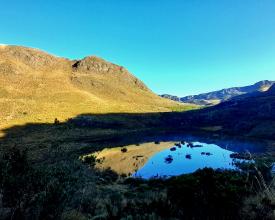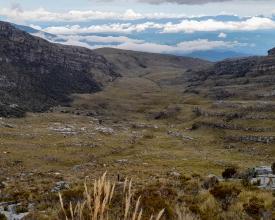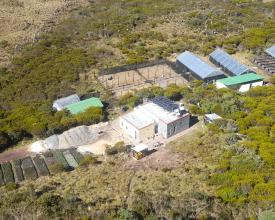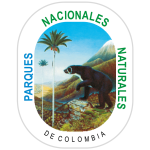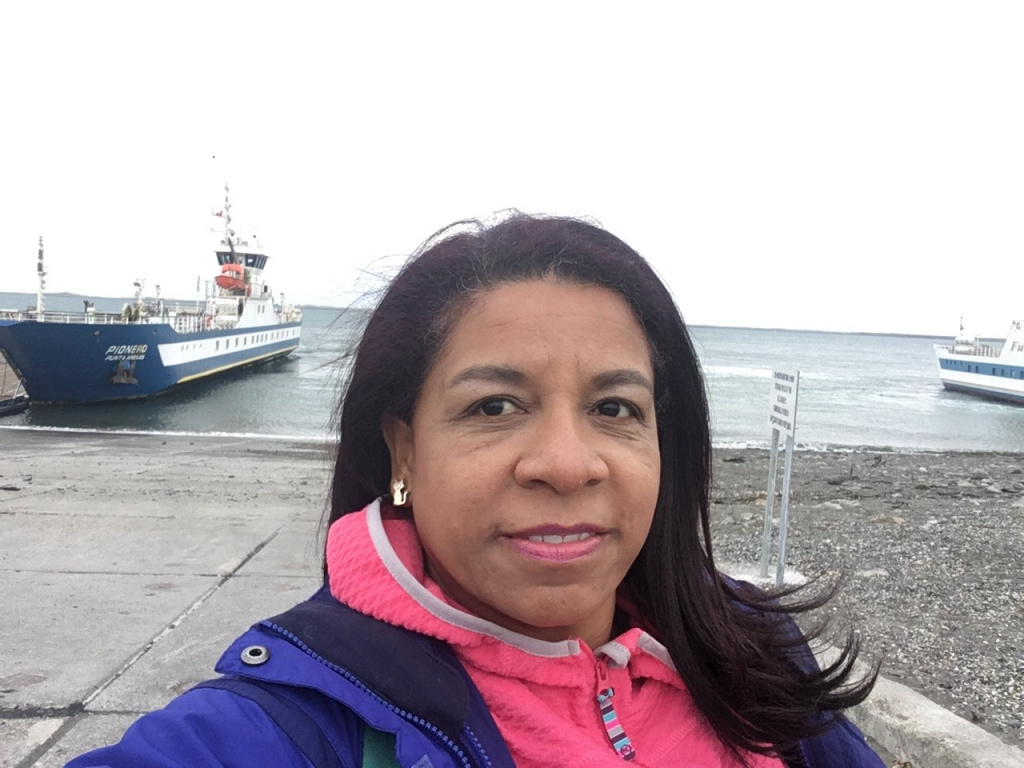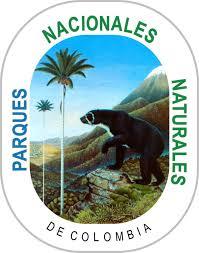
A conservation story at more than 3800 meters above sea level: The Guanentá Alto Río Fonce Flora and Fauna Sanctuary (SFFG) and its work with frailejones.
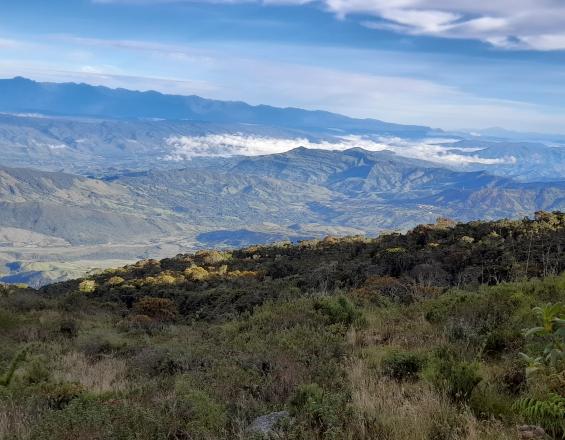
For some connoisseurs of Colombia's protected areas, the first words that come to mind when asked about the Guanentá Alto Río Fonce Fauna and Flora Sanctuary are "research" and "restoration", while for those who work directly there the words "conservation", "peace" and "work" are "conservation", "peace" and "work". The area has been recognized for its arduous work with the frailejones in the páramo for the last 8 years, positioning it as a leader in this area, producing its own plant material that is used to restore areas that have suffered the pressure of cattle ranching and burning, while at the same time conserving and researching, thus serving as a reference for other protected areas.
Context
Challenges addressed
Environmental
-Climaticconditionsdo not allow rapid progress in effective results between germination and growth yard, so it is necessary to ensure the survival of seedlings.
-Nursery maintenance represents a longer propagation time.
Economic
- Management of resources to have the required and continuous human talent, as well as the infrastructure and inputs for the operation of the nursery, propagation and planting.
Social
-Difficult access to the sector where the nursery is located due to the poor condition of the roads.
-Sensitization of the local community on the conservation of the páramo ecosystem.
-Linking strategic partners to contribute to propagation and planting.
-Consolidation of voluntary conservation agreements with peasant families with land within the Sanctuary used for cattle ranching in order to free up areas for restoration.
Location
Process
Summary of the process
The success of the work carried out in the Guantentá Alto Río Fonce FFS over the years is due to the participation of several actors and the joint work that has allowed the generation of collective knowledge, these efforts continue today with the objective of continuing to be a protected area that propagates seeds of sensitive species, conserves, restores and, together with others, researches and teaches.
Building Blocks
Collaborative restoration of the páramo ecosystem
The release of areas within the Sanctuary that were used for cattle ranching, within the framework of the signing of conservation agreements with the farmers, to reduce pressure on the Paramo, was the first step in the recovery process of this important ecosystem, which offers vital ecosystem services for the territory such as water supply, water regulation, purification, carbon sequestration and habitat provision, besides being an area that is characterized as a corridor for various species of fauna, richness in flora diversity and presence of endemic species.
In this sense, this restoration initiative helps guarantee that local communities can continue to enjoy the benefits it offers and at the same time gain knowledge about the propagation and management of high mountain species.
Thus, the Sanctuary is committed to the conservation, restoration, and sustainable management of the ecosystem together with strategic allies such as regional environmental authorities, non-governmental organizations, local communities, public entities, and private enterprise.
Enabling factors
- Local communities willing to participate in the actions proposed by the Sanctuary for the conservation of the páramo.
- Management capacity and sensitivity to socio-cultural aspects on the part of the Sanctuary's team to establish channels of dialogue and trust with institutional and community stakeholders.
- Working team with knowledge of páramo restoration.
Lesson learned
-Integration of restoration actions to help prevent and mitigate use pressures.
- Research and monitoring information is key in the implementation of actions to prevent and mitigate pressures that impact strategic ecosystems such as the páramos.
Work in the nursery
The production of plant material in the PA for its own use facilitates the restoration process carried out within the area, since it is not easy to obtain these species in external nurseries. Taking into account this need, the SFFG nursery was inaugurated in 2021 and has a capacity to propagate and house more than 80,000 individuals of 23 species, including 13 species of frailejon, 3 of which are endemic.
The specific conditions for propagation, maintenance and species-specific production have been generated from the process developed with the protected area team. The propagation process begins with the collection of the seeds, in the case of the frailejones, these are found in the flower stalks, then they are sieved and the best ones are selected. They are then taken to the nursery for germination. The work in the nursery includes activities such as watering the seedlings twice a day, weeding, filling the bags, transplanting into the bags or potting, monitoring, experimentation and, of course, maintenance of the nursery.
Enabling factors
-People working full time in the nursery.
-Experimentation and research aimed at optimizing germination processes and seedling care, as well as nursery maintenance.
-Strategic alliances for resource management and training.
Improved germination processes: storage and selection of seeds and technical pre-germination processes.
-Team with technical capacity and experience.
Lesson learned
- In situ work allows for constant observation and experimentation in order to generate knowledge about the best way to propagate species for which no further information is available.
-Linking local knowledge and experiences learned in the construction of infrastructure.
- Seed storage and adequate collection times to increase viability.
Participation of key stakeholders (financing, agreements, alliances, etc.)
The financing of productive alternatives and/or improvement of agricultural practices outside the Sanctuary for families with land inside the protected area has stimulated the liberation of areas that were used for cattle ranching; in this way, actions have focused on recovering the impacted zones. On the other hand, the management of technical and financial resources with public and private actors facilitates the development and long-term permanence of the restoration process, because in addition to the construction of the infrastructure and the operation of the nursery (technical equipment and supplies), planting, maintenance and care are also carried out.
Much of the restoration work carried out by PNNC is thanks to the participation and inter-institutional efforts of CAS, CORPOBOYACA, WWF Colombia, AGROSOLIDARIA Association, the National Army, the municipalities, private companies and other key actors, who have provided inputs, labor and infrastructure, mainly. Undoubtedly, the strategic alliances in favor of biodiversity conservation in the Sanctuary are key to continue with the arduous and important work that the area has been implementing with these key actors.
Enabling factors
- Good and constant relationship between local communities and the PA.
- Compliance with the work plan among inter-institutional actors.
-Resource management by partners and allies.
Lesson learned
Alliances and agreements with different institutions make it possible for far-reaching projects such as the one carried out by the SFF Guanentá to be maintained over time. Thanks to teamwork with NGOs and academia, the work of propagation, restoration and research of these important species continues today.
Research-monitoring
Guanentá has been characterized by its research work with different paramo and high mountain species, including three species endemic to the paramos of Colombia, Espeletia cachaluensis, E. chontalensis and E. laxiflora, as well as the Coloradito (Polylepis quadrijuga), these species are Conservation Object Values (VOC) of the protected area and of great value to local communities.
The research has been carried out hand in hand with educational institutions, which have had the opportunity to support the gathering of information on these and other species in the Sanctuary, generating information that has been complemented with the local knowledge of the inhabitants of the area of influence, which has been key in all phases of the project, from the collection of the seeds of each species, the propagation process, the maintenance of the seedlings in the nursery, and the subsequent planting of the individuals. In addition, Guanentá, being the PA with the greatest diversity of frailejones in the country, makes it an excellent scenario for research.
Enabling factors
-Agreements with universities for the development of research on endemic species of the páramos.
-Local knowledge of farmers to complement the information generated.
Follow-up and monitoring of frailejon and high montane species that are propagated and planted.
Lesson learned
- The information obtained with respect to effective propagation methods, timing and restoration strategy, product of the research, has been key for the generation of conservation actions and decision making.
- The frailejon baseline, monitoring and plots allow us to learn more about the biology and ecology of the species in order to implement actions that favor the conservation of the species.
-The effectiveness of planting is better when it is done with local personnel who have knowledge of the area than with external labor.
Awareness and environmental education actions
The work of sensitization and environmental education that the Sanctuary has been developing has been key in the contribution to the conservation of the páramo and its biodiversity. Thanks to these actions, nowadays the people of the surrounding villages and owners of properties and RNSC, for whom the Sanctuary has become a place that provides them with knowledge and where they can interact with others around learning and conservation, define it as an "open environmental classroom". Fabio Muñoz, current head of the Sanctuary and his team are working to consolidate the Training School for Paramo Conservation, a proposal that seeks to continue with environmental education and teaching actions on the Sanctuary's restoration exercise to any person or entity that wishes to learn and replicate it in other areas of the country. The National Army of the Silva Plazas Battalion and its military base in Peña Negra, for example, have participated in the training sessions.
Enabling factors
-Constant relationship with the local community of the municipalities of Encino, Charalá and Gámbita (Santander) and Duitama (Boyacá), which has generated trust, closeness and interest in learning.
-Creativity to teach by the Sanctuary's team, everything related to the project of propagation of the species with which they work in the nursery.
- Articulation with the Natural Reserves of the Civil Society to develop joint activities that favor the restoration process.
Lesson learned
Environmental education and awareness-raising are necessary in the art of conserving ecosystems and species of interest.
Impacts
- The PA works with more than 30 species of paramo and high mountain flora, of which 22 are frailejon species, 3 of which are endemic, thus generating the necessary material for the restoration process, community awareness and valuable information that allows the formulation of actions for their conservation.
-In the last 3 years, more than 79,500 individuals have been planted, restoring about 106 hectares impacted by cattle ranching activities inside and outside the Sanctuary.
-The PA produces Andean forest species that contribute to the conservation process in this ecosystem.
-Propagation of 80,000 seedlings in 2022, of which more than 3,500 are frailejones.
- Employment of 23 peasant families in the propagation and planting process.
-Progress in the consolidation of the Escuela de Formación para la Conservación del Páramo, a proposal that seeks to continue with environmental education and teaching actions on the restoration of the Sanctuary to the communities in the area, the National Army, and institutions in the region.
- Articulation with private companies and public institutions to finance the initiative, such as CAS, CORPOBOYACÁ, PNNC, WWF Colombia, KFW fund, and Colgate, totaling close to USD325,000.
Beneficiaries
-The populations benefiting from the ecosystem services provided by the páramo, as well as from the training, workshops and exchange of knowledge.
-23 families of the community work in the propagation, planting and care of seedlings.
Sustainable Development Goals
Story
The Guanentá Alto Río Fonce Flora and Fauna Sanctuary was created on August 10, 1993. It covers an area of 10,429 ha and is part of the moorland and Andean forest belt known as the Guantiva-La Rusia-Iguaque Conservation Corridor; it is located in the northeastern region of Colombia, on the Eastern Cordillera of the Andes, in the municipalities of Encino, Charalá and Gámbita (Santander) and Duitama (Boyacá).
In the Sanctuary, the páramo covers approximately 30% of the total area, it is considered as a speciation center of this important ecosystem, it is composed by the presence of endemic and endangered vegetal species that have not been valued and therefore little studied and, in addition, the páramo and its surroundings have been affected by anthropic activities that have caused its deforestation.
Due to the above and with the objective for which the PA was declared, a strategy for the conservation and management of representative pressured plant species was developed and effective actions were taken for the restoration of degraded areas where research and knowledge generation are also promoted. In 2013 the project for which the FFS is known today was born: propagation of páramo plant material as a strategy for the conservation of endangered, vulnerable and frequently used species and for the development of actions for the restoration of degraded ecosystems within and in the vicinity of the Sanctuary.
Fabio Muñoz, current head of the PA, recalls when the project was initiated, the donation of a 400 m2 lot to the Jesuits was requested, with the proposal to build a space for research on topics related to the páramo, the education of communities around its conservation, the propagation of plant material and support for the prevention, control and monitoring of the Sanctuary; donation that finally resulted in a property of almost 5 Ha becoming a regional space where the páramo is talked about and conserved.In April 2015, the construction of the nursery began in the FFS, for the production of more than 22 species of frailejones mainly, in 2021, the nursery was expanded and currently has a capacity of 80 thousand seedlings, where they remain on average 3 years, to then be taken to their final planting site. According to follow-up information on the restoration process, between 2020 and 2023, 79,500 individuals have been planted in an area of 106.1 ha.

